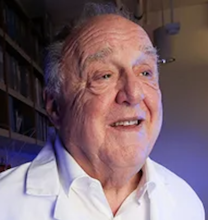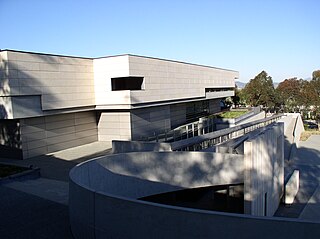
The University of California, San Diego is a public land-grant research university in San Diego, California, United States. Established in 1960 near the pre-existing Scripps Institution of Oceanography, UC San Diego is the southernmost of the ten campuses of the University of California, and offers over 200 undergraduate and graduate degree programs, enrolling 33,096 undergraduate and 9,872 graduate students. The university occupies 2,178 acres (881 ha) near the coast of the Pacific Ocean, with the main campus resting on approximately 1,152 acres (466 ha).

The Scripps Institution of Oceanography is the center for ocean and Earth science at the University of California, San Diego.
UC San Diego Health is the academic health system of the University of California, San Diego in San Diego, California. It is the only academic health system serving San Diego and has one of three adult Level I trauma centers in the region. In operation since 1966, it comprises three major hospitals: UC San Diego Medical Center in Hillcrest, Jacobs Medical Center in La Jolla, and UC San Diego Health East Campus Medical Center in East County. The La Jolla campus also includes the Moores Cancer Center, Shiley Eye Institute, Sulpizio Cardiovascular Center, and Koman Family Outpatient Pavilion, and the health system also includes several outpatient sites located throughout San Diego County. UC San Diego Health works closely with the university's School of Medicine and Skaggs School of Pharmacy to provide training to medical and pharmacy students and advanced clinical care to patients.
Benjamin Franklin Cravatt III is a professor in the Department of Chemistry at The Scripps Research Institute in La Jolla, California. Considered a co-inventor of activity-based proteomics and a substantial contributor to research on the endocannabinoid system, he is a prominent figure in the nascent field of chemical biology. Cravatt was elected to the National Academy of Sciences in 2014, and the American Academy of Arts and Sciences in 2016. He is Gilula Chair of Chemical Biology, a Cope Scholar, and a Searle Scholar.

Richard Alan Lerner was an American research chemist. He was best known for his work on catalytic antibodies and combinatorial antibody libraries. Lerner served as President of The Scripps Research Institute (TSRI) from 1987 until January 1, 2012, and was a member of its Skaggs Institute for Chemical Biology, in La Jolla, California.

The University of California San Diego School of Medicine is the graduate medical school of the University of California, San Diego, a public land-grant research university in La Jolla, California. It was the third medical school in the University of California system, after those established at UCSF and UCLA, and is the only medical school in the San Diego metropolitan area. It is closely affiliated with the medical centers that are part of UC San Diego Health.

Gerald Francis "Jerry" Joyce is president and professor at the Salk Institute for Biological Studies and was previously the director of the Genomics Institute of the Novartis Research Foundation. He is best known for his work on in vitro evolution, for the discovery of the first DNA enzyme (deoxyribozyme), for his work in discovering potential RNA world ribozymes, and more in general for his work on the origin of life.

Sanford Burnham Prebys is a 501(c)(3) non-profit medical research institute focusing on basic and translational research, with major research programs in cancer, neurodegeneration, diabetes, infectious, inflammatory, and childhood diseases. The institute also specializes in stem cell research and drug discovery technologies.
The Scripps Research Institute (TSRI) Graduate Program is an interdisciplinary graduate school offering doctoral (Ph.D.) degrees in the chemical and biological sciences.
Dale Lester Boger is an American medicinal and organic chemist and former chair of the Department of Chemistry at The Scripps Research Institute in La Jolla, CA.

The Neurosciences Institute (NSI) was a small, nonprofit scientific research organization that investigated basic issues in neuroscience. Active mainly between 1981 and 2012, NSI sponsored theoretical, computational, and experimental work on consciousness, brain-inspired robotics, learning and memory, sensory processing, and motor control.
Thomas Dean Pollard is a prominent educator, cell biologist and biophysicist whose research focuses on understanding cell motility through the study of actin filaments and myosin motors. He is Sterling Professor of Molecular, Cellular & Developmental Biology and a professor of cell biology and molecular biophysics & biochemistry at Yale University. He was dean of Yale's Graduate School of Arts and Sciences from 2010 to 2014, and president of the Salk Institute for Biological Studies from 1996 to 2001.
Victor Nizet is an American microbiologist who is a professor of pediatrics. He is a Distinguished Professor and Vice Chair of Basic Research at the Department of Pediatrics at the University of California, San Diego (UCSD) School of Medicine. He is also a Distinguished Professor at UCSD Skaggs School of Pharmacy and Pharmaceutical Sciences in La Jolla, California. He is known for his research in the areas of molecular microbiology and the innate immune system, with a particular focus on infectious diseases caused by common Gram-positive bacterial pathogens such as Group A Streptococcus, Group B Streptococcus and Staphylococcus aureus.

Michael A. Marletta is an American biochemist. He was born in Rochester, New York, the son of Italian immigrants. He graduated from the State University of New York at Fredonia in 1973 with an A.B. degree in biology and chemistry, and from the University of California, San Francisco in 1978 with a Ph.D. degree in pharmaceutical chemistry, where he studied with George Kenyon. He was a postdoctoral fellow with Christopher T. Walsh at MIT from 1978-1980 and continued as a faculty member at MIT from 1980-1987 whereupon he joined the faculty of the University of Michigan, Ann Arbor. He was John G. Searle Professor of Medicinal Chemistry in the college of pharmacy and professor of biological chemistry at the University of Michigan. In 2001, he moved to the University of California, Berkeley to assume roles as Aldo DeBenedictis Distinguished Professor of Chemistry and professor of biochemistry and molecular biology, and served as the chair of the department of chemistry from 2005 until 2010. He was a Howard Hughes Medical Institute Investigator. From January 2012 to August 2014, Marletta was president and CEO of The Scripps Research Institute in La Jolla, California, succeeding Richard Lerner.

The Center for Academic Research and Training in Anthropogeny (CARTA) is a center at the University of California, San Diego. Formally established in 2008, CARTA is a collaboration between faculty members of UC San Diego main campus, the UCSD School of Medicine, the Salk Institute for Biological Studies, and interested scientists at other institutions from around the world.

William R. Roush is an American organic chemist. He studied chemistry at the University of California Los Angeles and Harvard University. Following a year postdoctoral appointment at Harvard, he joined that faculty at the Massachusetts Institute of Technology. In 1987, Dr. Roush moved to Indiana University and was promoted to Professor in 1989 and Distinguished Professor in 1995. Two years later, he moved to the University of Michigan in Ann Arbor and served as the Warner Lambert/Parke Davis Professor of Chemistry. He served as chair of the University of Michigan's Department of Chemistry from 2002-2004. In 2004 Professor Roush relocated with his group to the Jupiter, Florida, campus of the Scripps Research Institute (TSRI) where he is currently an emeritus professor.

The Scripps Energy & Materials Center (SEMC) is an American research center that focuses on research in the basic energy and materials sciences. Located in Jupiter, Florida, the center has scientists, graduate students, and administrative staff. The SEMC is a part of the Scripps Research Institute (TSRI), one of the largest non-profit research institutes in the world.
James C. Paulson is an American biochemist and biologist known for his work in glycobiology.
Albert Baird Hastings was an American biochemist and physiologist. He spent 28 years as the department chair and Hamilton Kuhn Professor of Biological Chemistry at Harvard University. After retiring from Harvard, Hastings moved to the Scripps Clinic and Research Foundation, where he became the director of the division of biochemistry and helped to establish the institution's emerging program in basic research. In 1966, he became one of the first faculty members at the University of California, San Diego's new medical school. His research focused on the biochemical underpinnings of physiology and included characterizing acid-base homeostasis in blood and pioneering the use of radioactive tracers for studying metabolism. Hastings received a number of honors and awards for his work, including election to the National Academy of Sciences in 1937 and the President's Medal for Merit in 1948 following his wartime service on the Committee for Medical Research. Hastings died of heart failure in 1987 at age 91.
Dianne Brenda McKay is an American immunologist who is a professor of immunology and microbiology at Scripps Research. She was president of the American Society of Transplantation from 2018 to 2019.












